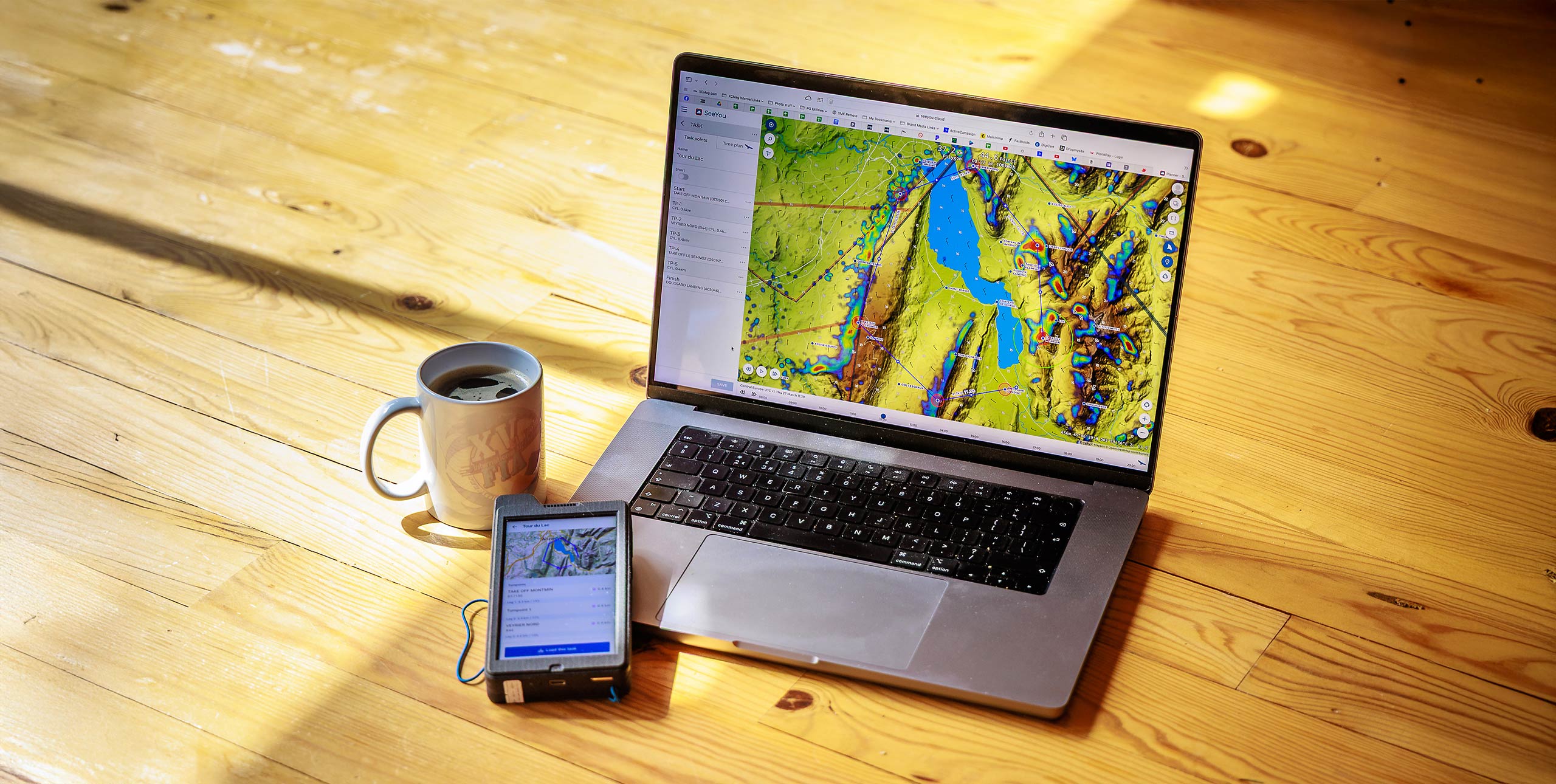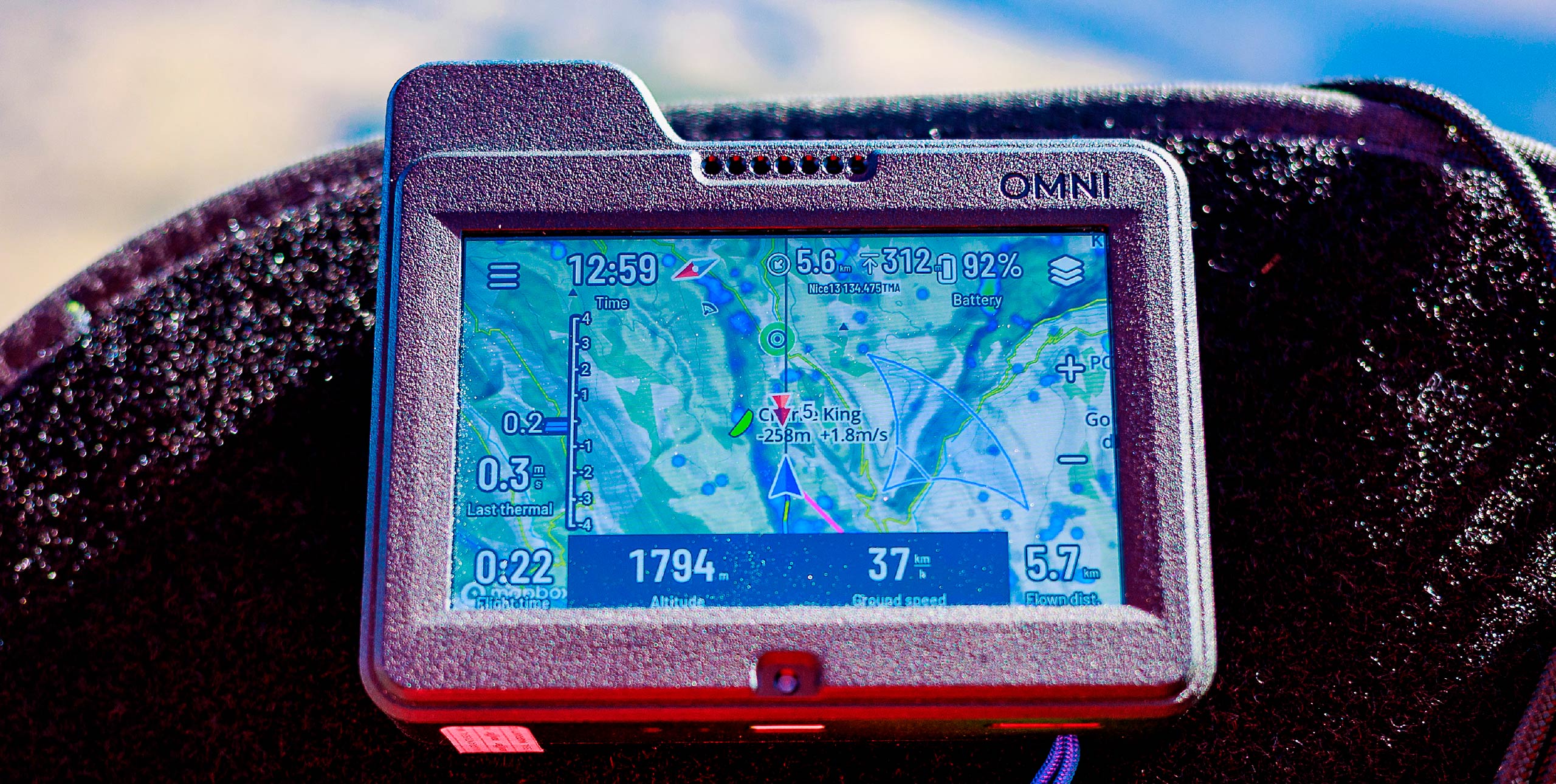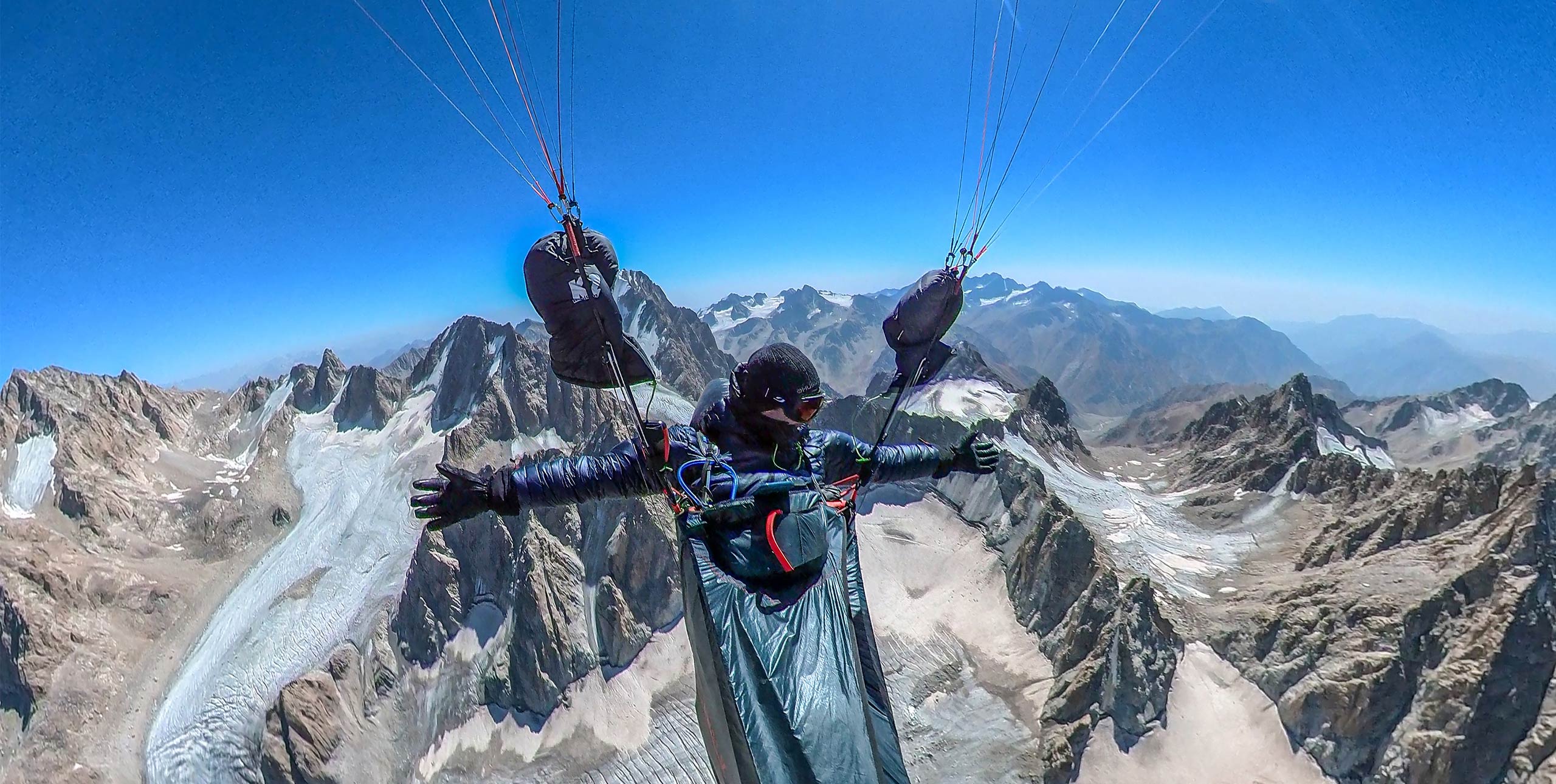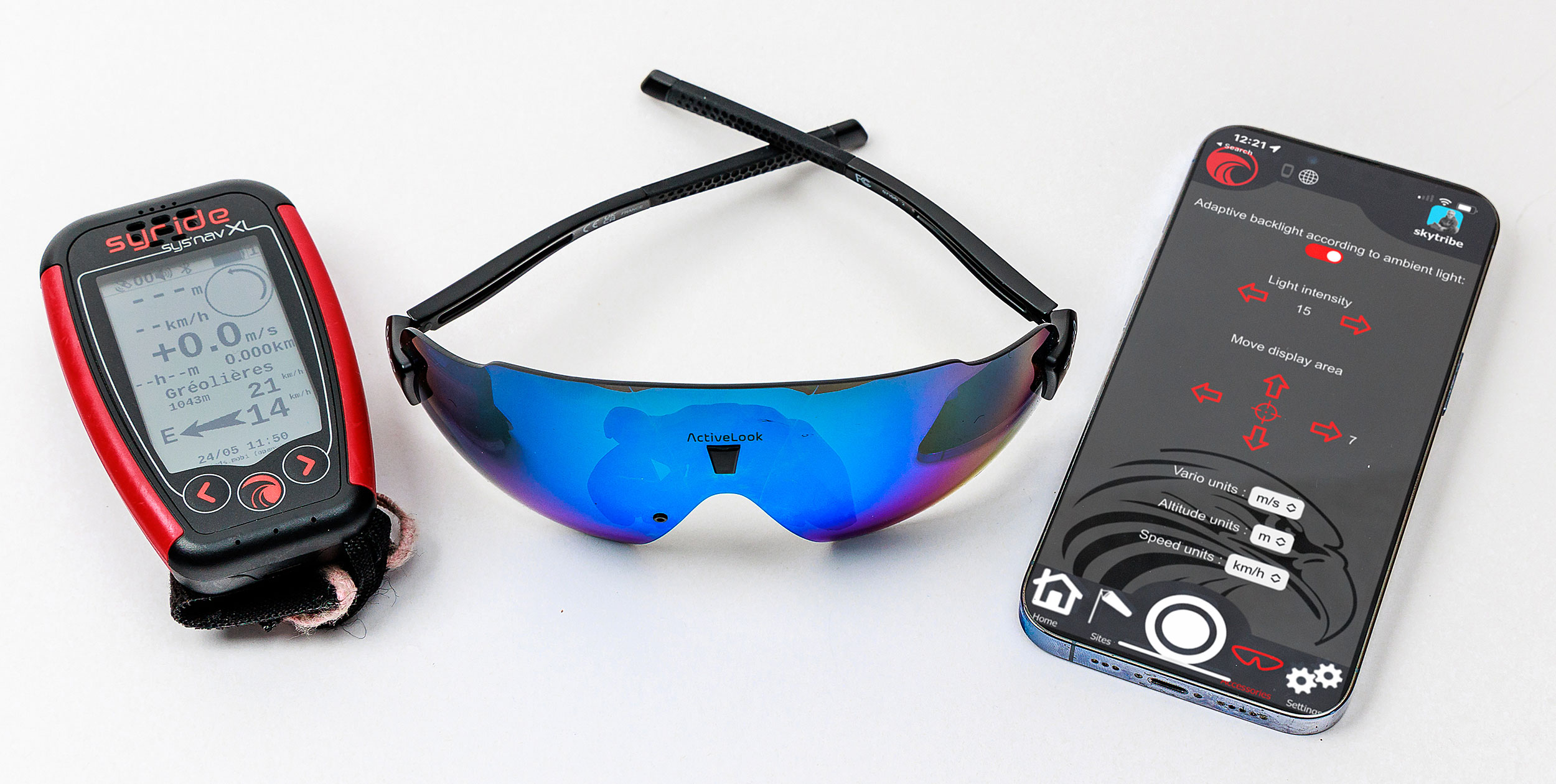
Vision of the future? Marcus King flies with this head-up display
“Check your speed and altitude without having to look down at your instrument.” That is the promise of these new glasses, which are used in conjunction with Syride’s updated app for their Sys’NavXL instrument. Together they create a head-up display for paragliding.
The sunglasses
The sunglasses that Syride use are made by Engo, a French company that makes glasses for endurance athletes who want constant access to performance data. The glasses are available in two versions: one with a photochromatic lens (reacts to sunlight); and one with a category 3 lens (dark tint) available in two sizes. Style-wise they look like cycling glasses.
The electronics are hidden behind the lens as part of the nose bridge. This seems slightly bulky at first, but you get used to it. It includes the display and the battery, plus a magnetic charging port and control button. Once fully charged (using the supplied micro-USB cable) the battery can last 10-12 hours.
On the right side is a display and mirror, which projects and reflects the output onto the inside of the lens. You can view the data by glancing up and to the left. It is only your right eye that can see it. The exact positioning can be adjusted slightly as well as the brightness.
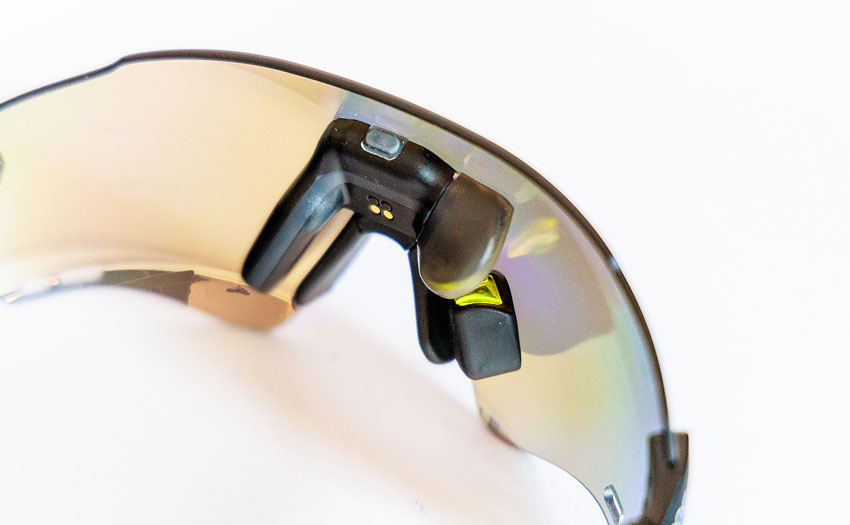
Switching on
When you first switch on the glasses you have to pair them to the Syride app. This assumes you have already paired the app to your Sys’NavXL. When you pair you will see an additional menu item allowing you to control the glasses. Once the instrument, app and glasses are all up and running you will see that the glasses display data. You shouldn’t need to pair again, just switch on and they will be ready to go.
Currently the data displayed is hard-coded, but Syride told us they plan to make this user-selectable. For now, the unit displays vario, speed and altitude. Units for these are selected within the app. The figures are displayed as fairly large clear numbers. It’s not quite the augmented reality that some have predicted for flying, with airspace shown in your field of view, but it is a starting point. As well as the main data there are time and battery indicators for glasses, instrument and phone.

In use
The display is set with the same focal point as your distance vision, a blessing for those who use reading glasses. Where the glasses sit on your nose can affect the view of the data slightly, but they are easy to position. Data is simple to read with a quick glance up and left – it’s easier than having to look down at your instrument. I thought they might be uncomfortable but at only 36g they don’t really weigh any more than standard glasses.
I used them on some hike-and-fly XCs in our local valley and they were a great addition. They make vital information easily available all the time. Another advantage is you can then remove these fields from your instrument’s main screen, allowing for additional data to be displayed there.
It would be nice to have wind information in the glasses, as that is essential info, but hopefully Syride will make this possible soon. In flight I only found myself looking at my main instrument occasionally, to read wind data and for the thermal assistant
The verdict
At more than €300 they don’t come cheap, so whether the outlay is worth it will be a personal thing. They do give an interesting insight to a possible future, and where instruments may be going with augmented reality. As they stand, they give quick and easy access to your flying data, and you don’t have to look down at the instrument. It will be interesting to see how more data can be displayed without over-complicating things, as the simplicity is part of their beauty.

NO SYRIDE?
ActiveLook is an open standard and there are plenty of apps that can send data to them. Most of the apps are for running and cycling. In free flight XCTrack and a vario app for Garmin watches have also added support for ActiveLook.
I tried out the glasses with XCTrack on an Android phone. If you have the standard (free) licence you will have a fixed data layout. If you have upgraded to the pro licence you can configure your own, much in the same way as you do screens in the app.
The standard set-up includes quite a bit more data than Syride offer. The downside is that it is all quite small, making it harder to read. As well as vario, altitude and speed there are displays for wind, nearby airspace and even a simple heading display.
I think it is probably important to keep things as clear as possible in the glasses, and then use the phone to display navigation data. I can see it being useful to display important task information so you can glance at it easily when flying in gaggles.
Engo are also not the only manufacturers of ActiveLook glasses: Julbo and others make them too. As it is an open protocol any of the glasses should work.
Manufacturer’s SPECIFICATIONS
Syride say: “Enjoy instant and intuitive access to real-time data right in your field of view”
Use: Paragliding
Models: Engo 1 with a photochromic lens; Engo 2 is available with a regular-size or large cat.3 lens
Weight: 42g / 36g
Charging: micro USB, 10-12 hours
RRP: €399 / €329



